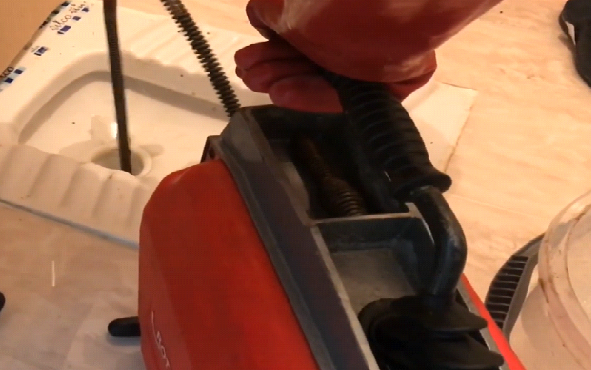Cleanroom construction requires careful consideration of various factors to ensure the creation of a controlled environment that meets industry standards and regulations. One of the most critical aspects is the selection of materials used in the construction process. The choice of materials directly affects the cleanliness, durability, and overall performance of the cleanroom. GREAT Purification System, a leading provider of cleanroom solutions, understands the importance of material selection and offers valuable insights into choosing the right materials for cleanroom construction.
1.Primary Considerations for Material Selection
When selecting materials for cleanroom construction, several primary considerations should be taken into account:
1.1 Cleanliness: Cleanrooms demand materials that are non-shedding, non-porous, and easy to clean. The selected materials should not contribute to contamination or generate particles that could compromise the cleanroom's controlled environment.
1.2 Chemical Resistance: Cleanroom materials must withstand exposure to various chemicals and cleaning agents without deteriorating or releasing harmful substances. Chemical-resistant materials ensure the longevity and safety of the cleanroom.
1.3 Durability: Cleanrooms are long-term investments, and the materials used should be durable enough to withstand the rigors of daily operations and maintenance. Choosing robust materials minimizes the need for frequent repairs or replacements.
1.4 Fire Resistance: Fire safety is crucial in cleanroom environments. Opting for fire-resistant materials adds an extra layer of protection and ensures compliance with safety regulations.

2.Walls and Ceiling Materials
The walls and ceiling of a cleanroom play a vital role in maintaining cleanliness and preventing the intrusion of contaminants. Here are some suitable materials for cleanroom walls and ceilings:
2.1 Fiberglass Reinforced Plastic (FRP): FRP panels are lightweight, durable, and resistant to corrosion and chemicals. They have a smooth surface that is easy to clean and maintain, making them an excellent choice for cleanroom construction.
2.2 Aluminum Honeycomb Panels: Aluminum honeycomb panels offer excellent structural integrity and thermal insulation properties. These panels are non-shedding, non-outgassing, and resistant to chemicals, making them ideal for cleanroom applications.
2.3 Stainless Steel: Stainless steel is a common choice for cleanroom walls and ceilings due to its durability, resistance to corrosion, and ease of cleaning. It also provides an aesthetically pleasing and professional look.
3.Flooring Materials
Cleanroom flooring requires careful selection to ensure cleanliness, comfort, and safety. Consider the following materials for cleanroom flooring:
3.1 Epoxy Resin: Epoxy resin flooring is seamless, providing a smooth and easy-to-clean surface. It is resistant to chemicals, abrasion, and microbial growth, making it an ideal choice for cleanrooms.
3.2 Vinyl Flooring: Vinyl flooring is another popular option for cleanroom environments. It offers a high level of cleanliness, is easy to maintain, and provides excellent resistance to chemicals and wear.
3.3 Conductive Flooring: For cleanrooms with sensitive electronic equipment, conductive flooring is necessary to prevent static electricity. Conductive materials, such as carbon-filled vinyl or rubber, help dissipate static charges and protect sensitive components.

4.Door and Window Materials
Doors and windows are potential areas for air leakage and contamination. Choosing appropriate materials for cleanroom doors and windows is crucial:
4.1 Smooth-Faced, Flush Doors: Smooth-faced, flush doors minimize the surfaces where particles can accumulate. They are non-porous, easy to clean, and provide a tight seal to prevent air leakage.
4.2 Tempered Glass Windows: Tempered glass windows are durable, scratch-resistant, and easy to clean. They offer transparency while maintaining cleanliness and structural integrity.
5.Secondary Considerations
In addition to the primary considerations, secondary factors can also influence material selection. These include:
5.1 Cost: Material costs should align with the cleanroom construction budget. It is important to balance quality and affordability without compromising critical requirements.
5.2 Sustainability: Choosing environmentally friendly and recyclable materials contributes to sustainable cleanroom construction practices and reduces the project's ecological footprint.

Conclusion
Choosing the right materials for cleanroom construction is crucial for achieving a controlled and contaminant-free environment. The selection process involves considering factors such as cleanliness, chemical resistance, durability, and fire resistance. GREAT Purification System understands the significance of material selection and offers a range of suitable cleanroom materials to meet industry needs. By prioritizing the right materials, cleanroom operators can ensure long-term performance, safety, and compliance with cleanroom standards and regulations.
Investing in the right materials for cleanroom construction is an investment in the success and efficiency of cleanroom operations. With the guidance of GREAT Purification System, cleanroom professionals can confidently select the materials that provide optimal cleanliness, durability, and performance in their cleanroom environments.








